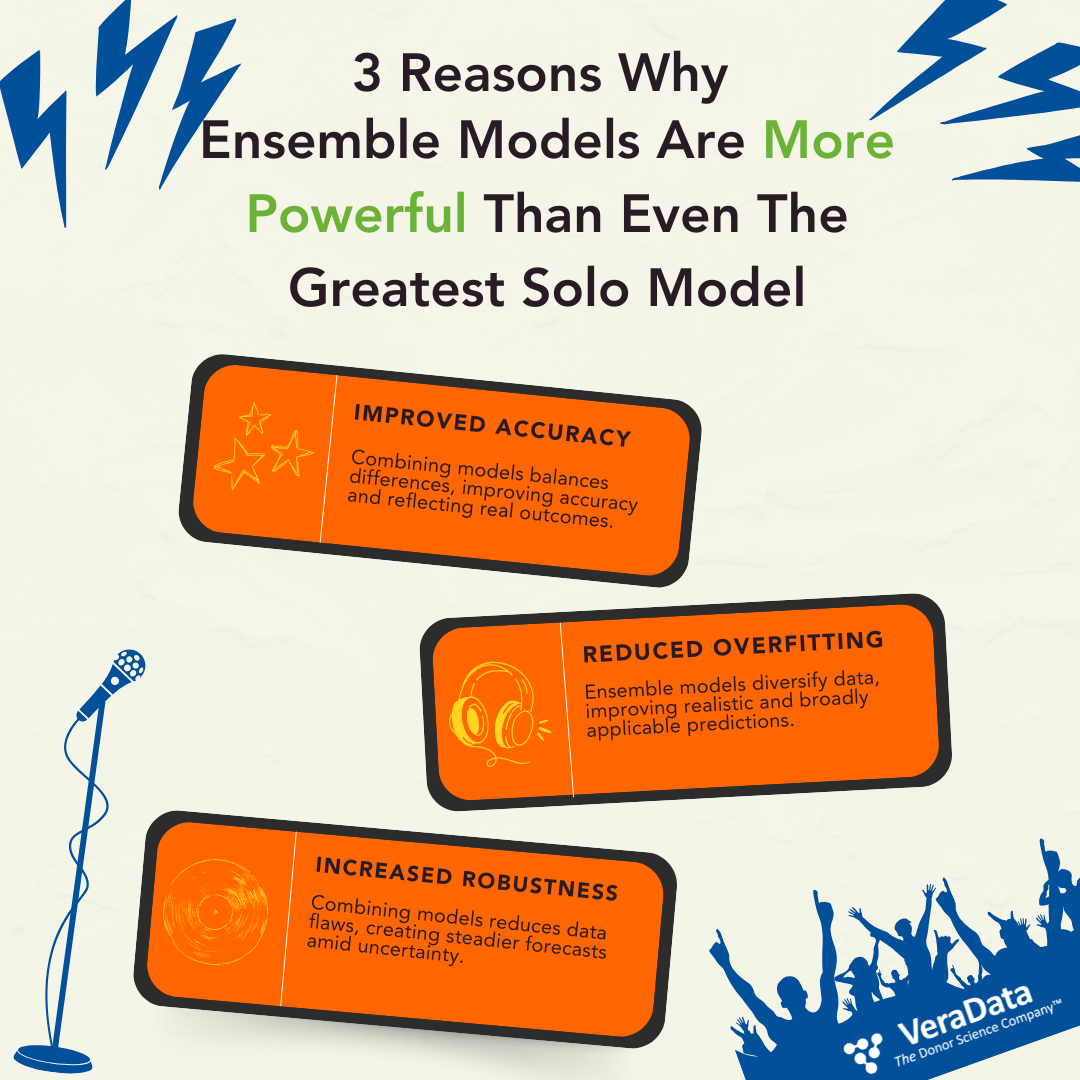News & Info
Bohemian Rhapsody of Data: Why Ensemble Models Are More Powerful Than Even The Greatest Solo Model
10/13/2025
What makes Queen such a great band? For one thing, the tone and timbre of their songs are distinctive. Was their sound due to Freddy Mercury? His voice is among the most celebrated in the pantheon of rock singers. Was it the blend of vocals from all members of the band? Well, both things can be true. In their opus, Bohemian Rhapsody, Mercury provides a soulful expression of regret and despair. As the song progresses, his bandmates, Brian May, John Deacon, and Roger Taylor, create an air of tension that builds to an energetic crescendo. An individual singer can create a distinctive identity. At the same time, multiple singers create a unique experience. The same principle applies to predictive analytics—and it’s central to how VeraData approaches donor modeling.
Ensemble analytical models operate like multiple singers. They improve performance by smoothing rough edges and amplifying their combined forecasts. Ensemble models combine two or more predictive models to improve accuracy and robustness. Instead of relying on a single model, they leverage the strengths of various models, often resulting in better overall performance and reduced generalization error. A model created from past performance, wealth, and financial data will offer some predictive qualities. The same is true for performance and propensity data. Performance and giving behaviors will also yield forecasts. Yet, when viewed in the aggregate, the three models offer better predictions of donor behavior than any one model alone. This ensemble approach is one of the foundational elements of VeraData’s Donor Science™ methodology.
Ensemble models provide three key benefits:
Improved Accuracy
Blending multiple models produces predictions that align more closely with real-world outcomes. Differences between individual models balance each other out, sharpening the overall result.
Reduced Overfitting
When models rely too heavily on narrow training data, they can miss the variety of outcomes we see in practice. Ensemble models counter this by pulling from different data sources, making the predictions more realistic and broadly applicable.
Increased Robustness
Data isn’t always perfect. Missing values, anomalies, or inconsistent sources can throw off a single model. By combining models, those disruptions are minimized, resulting in forecasts that hold steady across uncertainty.

Why This Matters for Donor Science
No single dataset tells the entire donor story. Ensemble models also provide different perspectives, which have the potential to create better outcomes. Ensemble models built from various datasets provide a diverse expression of behavior and characteristics. They enable the model to reflect the actual performance of those individuals.
Like Freddie Mercury, the performance of any single model can be extraordinary. Yet, Queen isn’t the same if it’s only him. The blend of voices, coupled with the musicianship of the rest of the band, creates a unique quality of greatness. Ensemble models contribute their individual predictions to a more effective combined forecast. At VeraData, our Donor Science approach brings these ensemble models together to give nonprofits clearer insights and stronger predictions that lead to better results. Providers who don’t use ensemble approaches may still find value in their analytics—but they’ll miss opportunities for the deeper accuracy and robustness that VeraData delivers.
Written by Tom Hutchison, Product Manager at VeraData